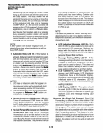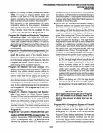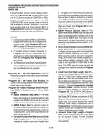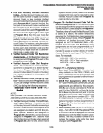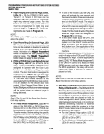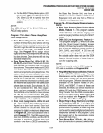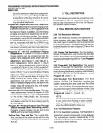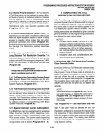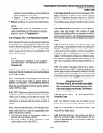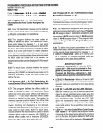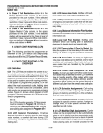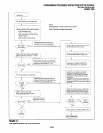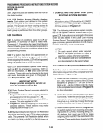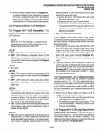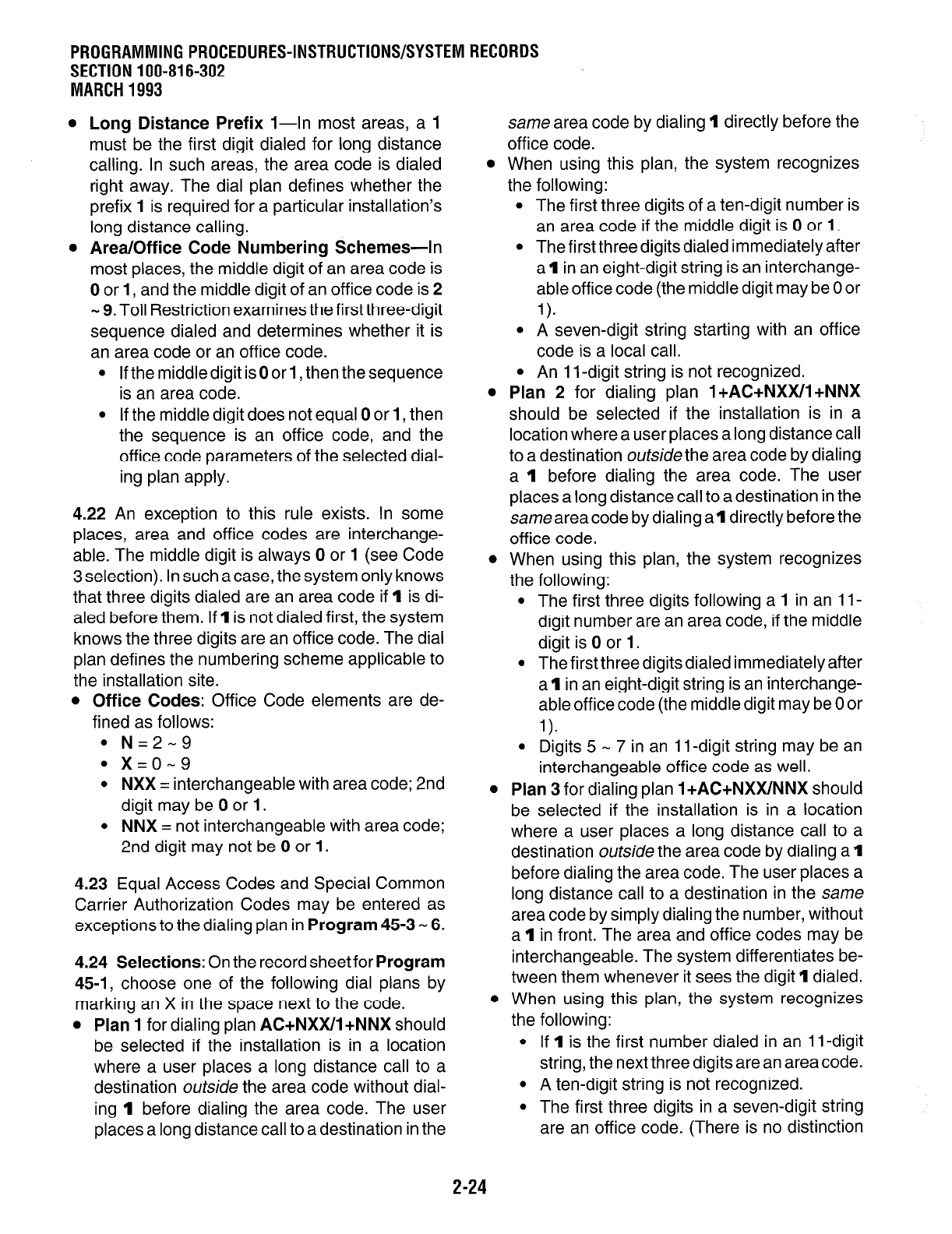
PROGRAMMINGPROCEDURES-INSTRUCTIONWSYSTEMRECOROS
SECTION 100-816-302
MARCH1993
l
Long Distance Prefix I-In most areas, a 1
must be the first digit dialed for long distance
calling. In such areas, the area code is dialed
right away. The dial plan defines whether the
prefix 1 is required for a particular installation’s
long distance calling.
same area code by dialing 1 directly before the
office code.
l
Area/Office Code Numbering Schemes-In
most places, the middle digit of an area code is
0 or 1, and the middle digit of an office code is 2
- 9. Toll Restriction examines the first three-digit
sequence dialed and determines whether it is
an area code or an office code.
l
If the middle digit is0 or 1, then the sequence
is an area code.
l
If the middle digit does not equal 0 or 1, then
the sequence is an office code, and the
office code parameters of the selected dial-
ing plan apply.
l
When using this plan, the system recognizes
the following:
l
The first three digits of a ten-digit number is
an area code if the middle digit is 0 or 1.
l
The first three digits dialed immediately after
a 1 in an eight-digit string is an interchange-
able office code (the middle digit may be 0 or
1).
l
A seven-digit string starting with an office
code is a local call.
4.22 An exception to this rule exists. In some
places, area and office codes are interchange-
able. The middle digit is always 0 or 1 (see Code
3 selection). In such a case, the system only knows
that three digits dialed are an area code if 1 is di-
aled before them. If 1 is not dialed first, the system
knows the three digits are an office code. The dial
plan defines the numbering scheme applicable to
the installation site.
l
An 1 l-digit string is not recognized.
l
Plan 2 for dialing plan 1 +AC+NXWl+NNX
should be selected if the installation is in a
location where a user places a long distance call
to a destination outside the area code by dialing
a 1 before dialing the area code. The user
places a long distance call to a destination in the
sameareacode by dialing al directly before the
office code.
l
Office Codes: Office Code elements are de-
fined as follows:
l N=2-9
l x=0-9
. NXX = interchangeable with area code; 2nd
digit may be 0 or 1.
l
NNX = not interchangeable with area code;
2nd digit may not be 0 or 1.
4.23 Equal Access Codes and Special Common
Carrier Authorization Codes may be entered as
exceptions to the dialing plan in Program 45-3 - 6.
4.24 Selections: On the record sheet for Program
45-1, choose one of the following dial plans by
marking an X in the space next to the code.
l
Plan 1 for dialing plan AC+NXWl +NNX should
be selected if the installation is in a location
where a user places a long distance call to a
destination outside the area code without dial-
ing 1 before dialing the area code. The user
places a long distance call to a destination in the
l
When using this plan, the system recognizes
the following:
l
The first three digits following a 1 in an II-
digit number are an area code, if the middle
digit is 0 or 1.
l
The first three digits dialed immediately after
al in an eight-digit string is an interchange-
able office code (the middle digit may be 0 or
1).
l
Digits 5 - 7 in an 11 -digit string may be an
interchangeable office code as well.
l
Plan 3 for dialing plan 1 +AC+NXWNNX should
be selected if the installation is in a location
where a user places a long distance call to a
destination outside the area code by dialing a 1
before dialing the area code. The user places a
long distance call to a destination in the same
area code by simply dialing the number, without
a 1 in front. The area and office codes may be
interchangeable. The system differentiates be-
tween them whenever it sees the digit 1 dialed.
l
When using this plan, the system recognizes
the following:
l
If 1 is the first number dialed in an 1 i-digit
string, the next three digits are an area code.
l
A ten-digit string is not recognized.
l
The first three digits in a seven-digit string
are an office code. (There is no distinction
2-24



